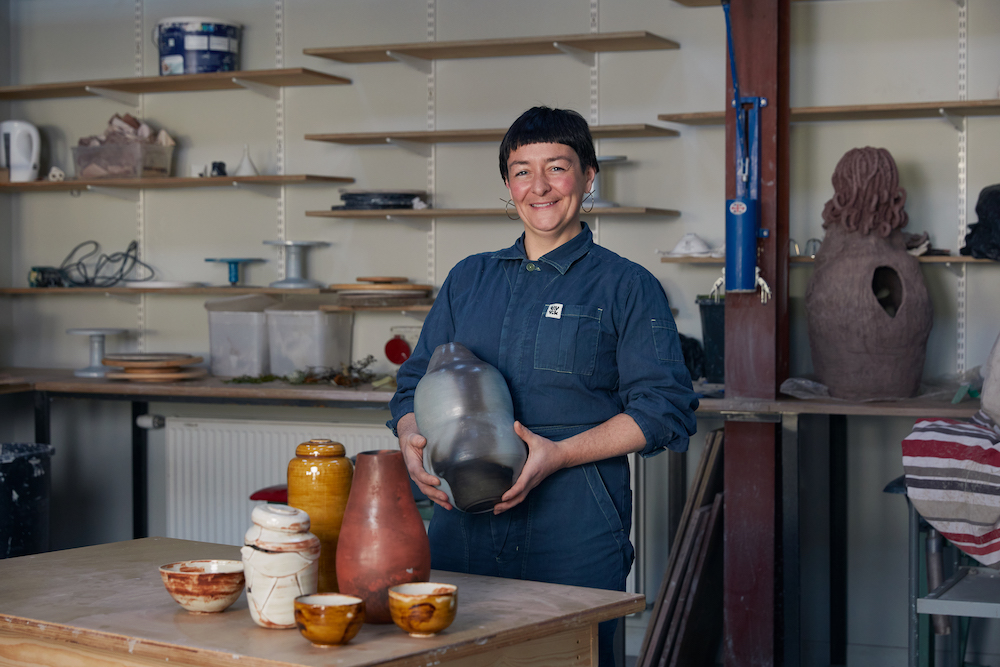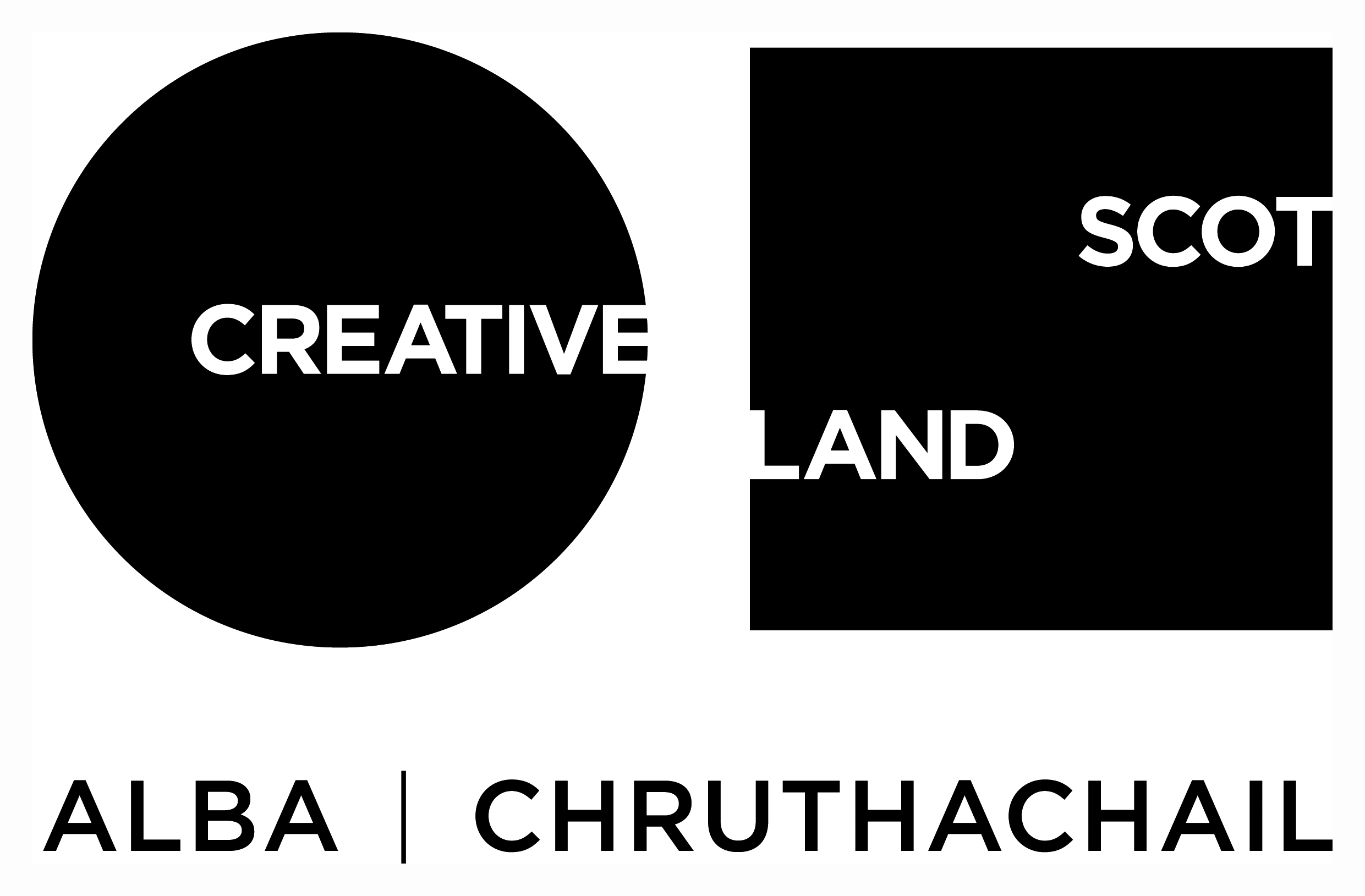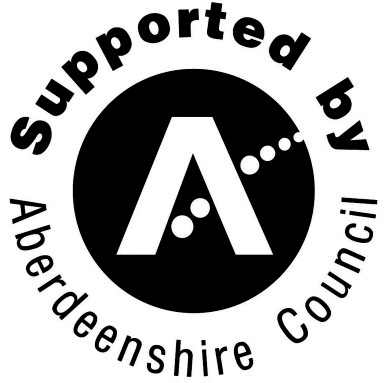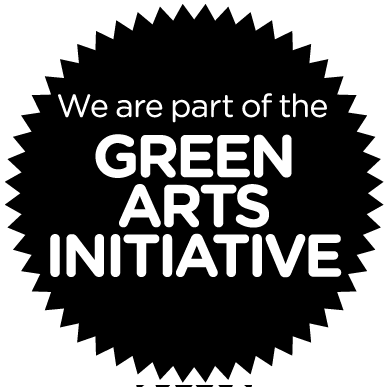For 4 weeks across November and December Nic Green took part in Residencies in Clay, which supported artists exploring the transformational potential of clay within society and contemporary arts practice. The residency culminated in Building the Clay Commons with Eva Masterman, which brought together local community members, makers and artists from the North East and beyond. Nic shares a collection of reflections and shares memories that she has connected with whilst experimenting with clay.
All words by Nic Green.
I came here as a performance maker, wanting to experiment further with clay and ceramics.
Each day begins with quiet, pre-sunrise solitude in the studio, the rhythms of the day, clay and myself interwoven.
When was the last time I followed these rhythms, quietening the timetables, structures and the patterns of mothering, education, work?
During this time I reflect on the past few years: A trajectory changed, a sense of agency shifted, art, myself, purpose. I realise I haven’t had time or energy to do this, until now.
Body-memories emerge of my child-self making mud pies; flat, sticky patties, or rolled-up ball shapes in the hand, the cool weight and damp residue left on the skin. I remember the deep flow of that play, honing in to sensory magic, realising when dinner time came that hours had passed and that time turned both slow and quick.
In performance, sometimes I can be lost in the rhythm and flow of what I am doing. Once (only once), I forgot I was performing, in the 7th hour of a durational duet, having repeated the same line with my co-performer for over an hour, bodies touching, eyes closed. This kind of state- communal, rhythmic, durational – is where I found a fleeting sense of freedom. I realise I can find this sensation – flow, or fey, or whatever it is – quite effortlessly with clay. My critical mind -sharpened through education, hyper-aware through professionalisation, precarity, high stakes, etc., struggles to quiet in the constructing and delivery of performance.
I like to think about time as a currency in the clay work, just as I do in performance. Often I make multiple pieces in relation – I struggle to understand something out of dialogue with another. I have noticed a difficulty in ‘finishing’ the pieces with predictability or control (as far as that is possible). In performance the audience complete the work, essentially transforming it from rehearsal into itself-performance. The heat-work, I suppose. I look for ways to disrupt the neatness of completion ‘on my terms’ with the pots. In the past I have satisfyed this desire by using alternative firing techniques. On this residency I have experimented with smashing the pot (tall, lidded jars) following bisque, glazing the individual pieces and reassembling them. The pieces, warped in their vitrification, resist assemblage with perfection or accuracy, seeming to defy their sense of self, somehow.
The vulnerability of the final body, the way you can see glimpses of its inside, how it simply won’t sit ‘right,’ speaks of brokenness, and things which cannot be fixed or do not fit together. To me it looks like a façade of function, or like something trying desperately to hold itself up, or pull itself together.
Or maybe, it’s a form breaking itself apart, stretching out of itself, its pieces unruly, resistant, defying their logical position.
Following the residency, Eva’s Building the Clay Commons week unfolded, where we talked and made around so much. Someone said clay is a good way to be in conversation with the dead and I was struck again by the notion of past selves.
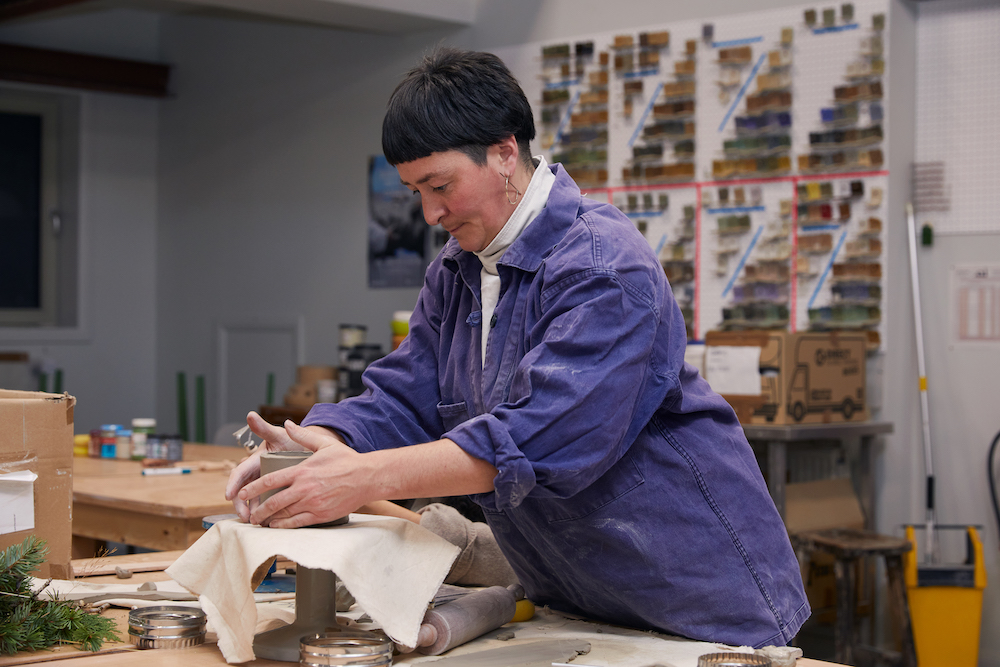
More memories of school time, me, a teenager ‘in trouble,’
I built large, slab figures in the art room, then. Women figures, older than me, almost life size, limbs outsretched, taking up space. I remember my art teacher saying the word ‘glaze.’ I recall the way her mouth wrapped around the word, a slight lisp on the ‘z’, the word itself seeming to drip thick liquid. If I think back hard to that time, I can remember that same, sensory sensation as I brushed glaze onto the rounded shape of a bisced arm.
Today is the last day of this residency. It is 4.30am and there is snow on the ground. The sun won’t rise proper for another four hours. At the start of this, the leaves were still on the trees, their colours pulsating from the sides of meandering roads that make me travel sick, even if I am driving.
As I wrap everything up in bubble wrap, I realise I am looking at these colours in the pots I have made.
Those quiet mornings merged into convivial afternoons surrounded by fellow residents, all of us whirring in the hustle-bustle of process, questions, histories, ambition, accident, stories, failure, hopes, material. Artists, women, each in a different decade of their life. Somehow, I am the old one now.
In my headphones, as I am reassembling the now augmented pieces of a broken pot, an I hear James Elder from UNICEF. ‘Inaction at its core, is the killing of children,’ he says. How do things, go back together? How can they?
I came here as a performance maker, wanting to experiment further with clay and ceramics.
I wonder now, if I will stop saying this soon. Maybe I will say ‘I am an artist working with clay and performance’, or something like this.
This wintery month has been like a time machine, opening a portal to the deep and sensorial love affair with the mud-pie, with other wonderful and beautiful artists. I come away feeling like I find comfort in my refusal of completion, neatness, control. I want to dissemble. How many times could I smash and glue a pot until it wasn’t itself anymore. What would it become then?
Read the blog from artist Mina Heydari-Waite who also took part in the Residencies in Clay Programme.


